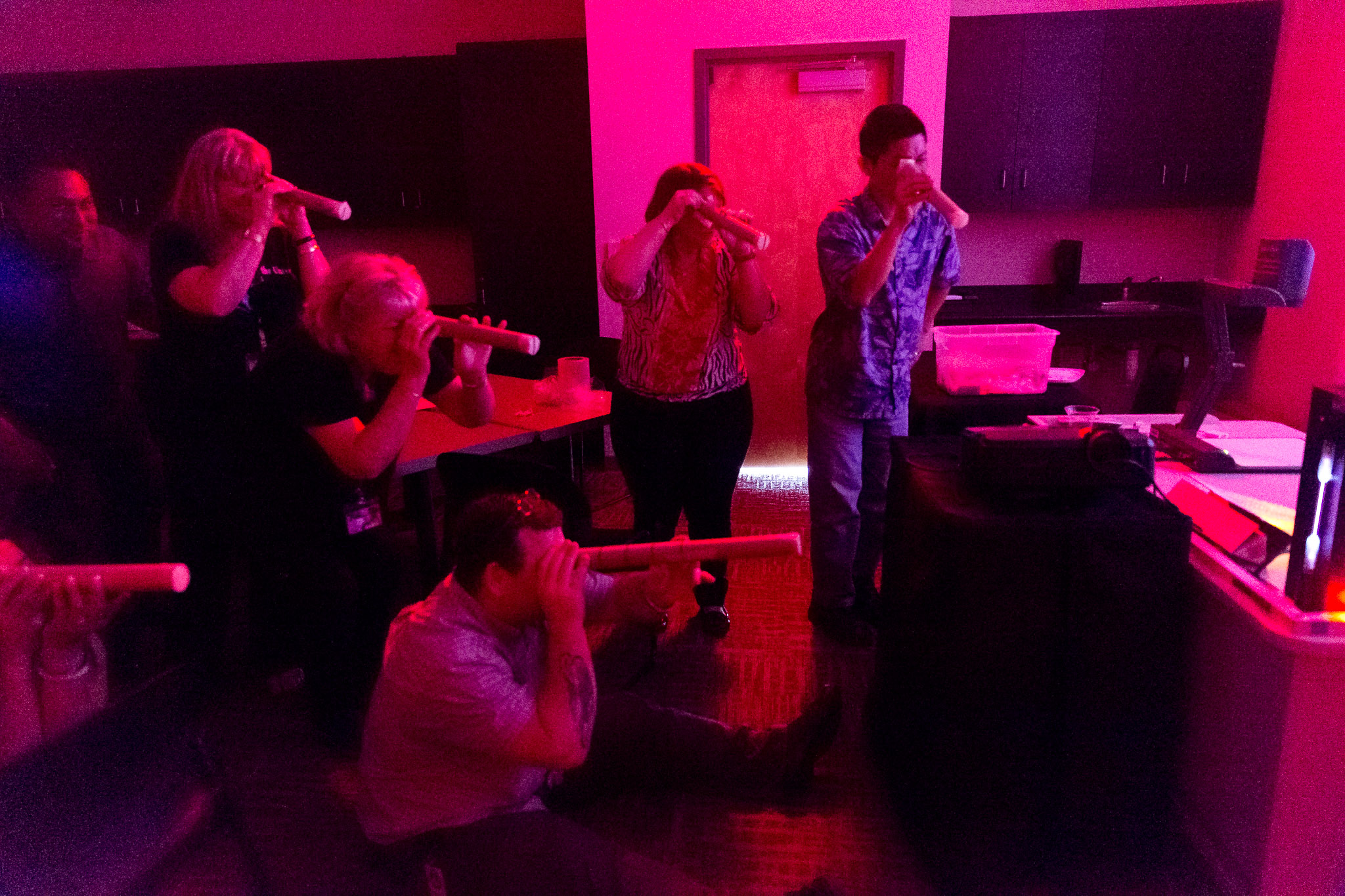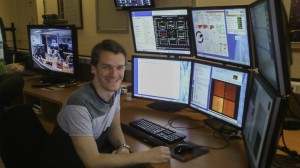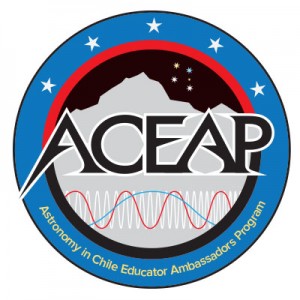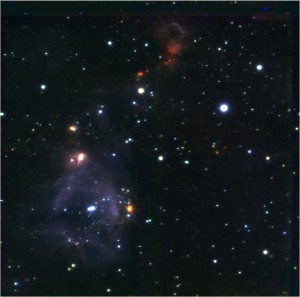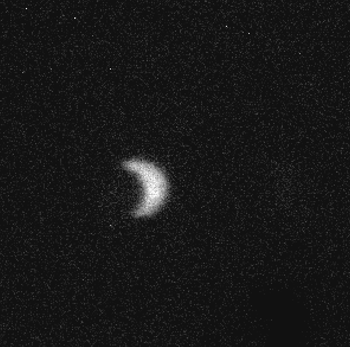
This animation reveals the progression of the occultation event of Jupiter’s moon Io by Europa. The Gemini North telescope was tracking Io, so Europa moves from left to right. During the actual occultation the images shown are in the L band, where Europa is nearly invisible because water ice on its surface absorbs almost all of the incident sunlight. Io’s surface is covered in frozen sulphur dioxide, which reflects more sunlight at this wavelength, causing Io to appear brighter. After the occultation ends the images shown are in the K band, a shorter infrared wavelength, where both Io and Europa reflect sunlight and thus are both “visible.” (updated)
Summit observers Jen Miller and Joy Chavez first noticed something unusual about the start of the night’s observations at Gemini North on December 16th, 2014, with this excerpt from the night log, “…the target looks like a crescent, like Venus or the moon. …reslew. …Same thing, different direction to the crescent.”
Gemini staff observer Sunny Stewart also got a surprise reviewing the previous night’s data “That’s no moon! It looks like Venus,” said Stewart. Observations of Jupiter’s volcanically active moon Io, obtained that night as part of a program led by Katherine de Kleer of UC Berkeley to watch for volcanic outbursts, revealed an unusual event involving Io and another large jovian moon, Europa. According to de Kleer, the images captured an occultation event in which Europa briefly blocked some of the light from Io, “…giving Io a very un-Io-like appearance!” These sorts of events occur when we observe the moons’ orbits edge-on, and can occasionally view the moons passing in front of one another.
From Earth, Io’s volcanoes are generally only detectable at infrared wavelengths where we see emission from the hot lava. Using large telescopes with adaptive optics systems allows us both to see the shapes of the moons and to pick out individual features. The bright spot on the Io’s left limb is thermal emission from an active volcano, and as Europa moves off of Io’s disk it uncovers a second fainter volcano near the right limb.
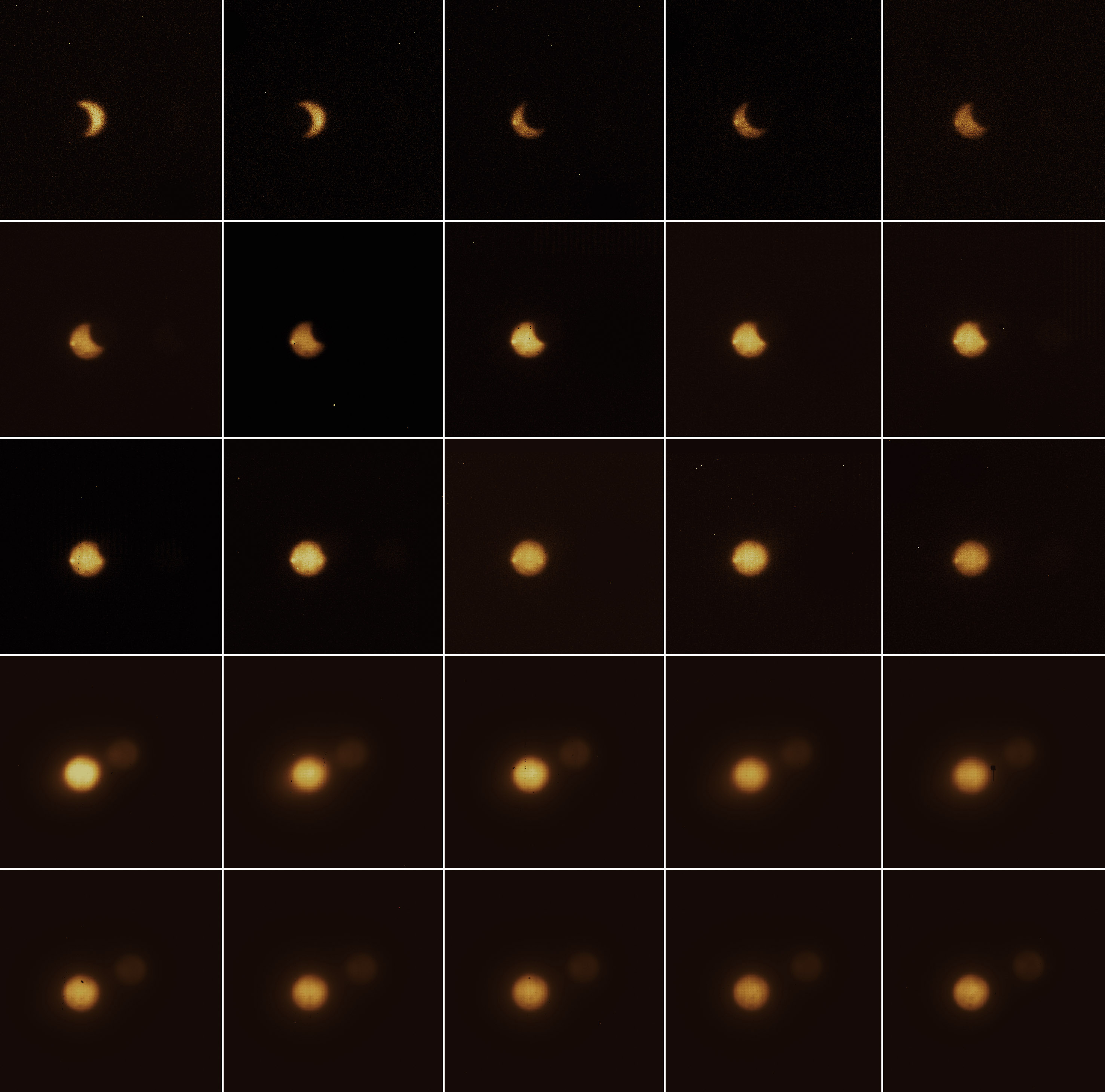
Individual images from Gemini observations of Io and Europa. All images were obtained using the Gemini Altair adaptive optics system and the Gemini Near-InfraRed Imager (NIRI). Click on the image to see a larger version.
Below is a diagram of the circumstances of the event and an image from the JPL simulator.
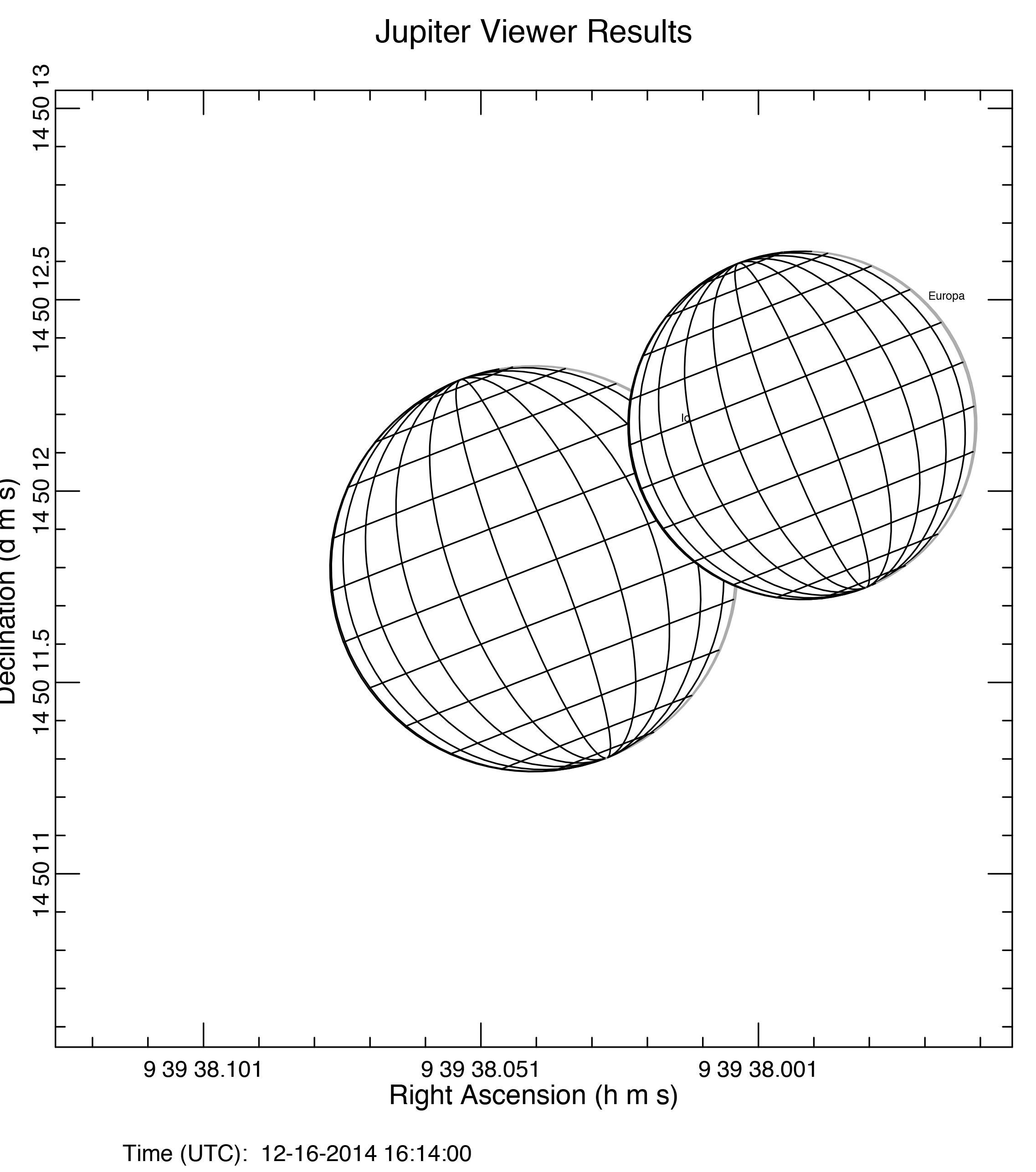
Output from the NASA Planetary Data System Rings Node at http://pds-rings.seti.org/tools/
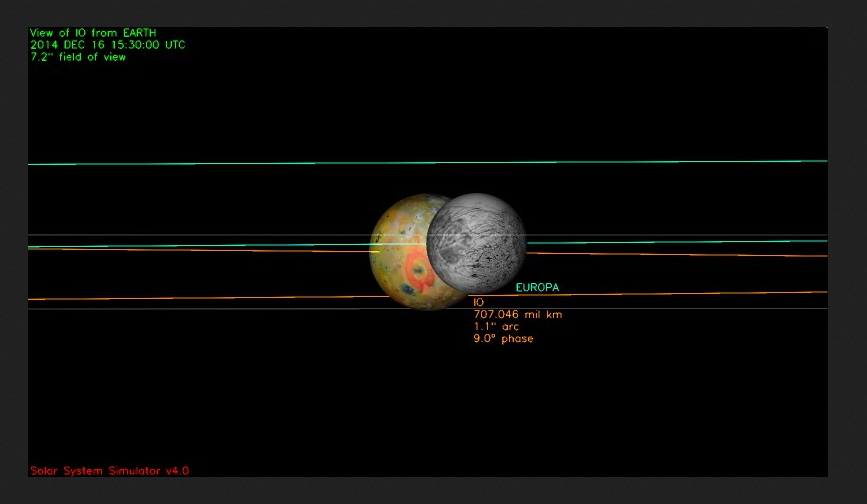
This is what was seen at Gemini North (note that the time is different since it doesn’t take into acount the time for the light to travel to the Earth!) Time is 16:10 – 40 = 15:30 UT. Jet Propulsion Laboratory (JPL) Solar System Simulator.
Updated 12/20/14

